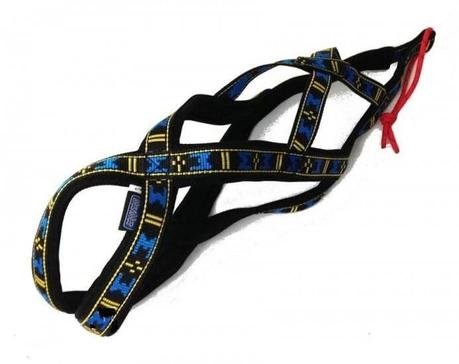What is canicross?
Canicross is a recent sport. It consists of running with your dog so as to form only one. It is a sport of sharing and bonding with your dog. It requires good daily observation of it and helps strengthen the master/dog relationship if it is well practised. Like puncture proof dog pools and gps wireless dog fence, canicross is a most valuable product for dogs as well as humans.
Both humans and dogs are well equipped. The dog has a harness adapted to its morphology and size. The human wears a specialized belt or harness. The pair is connected by a damped pull line.
Canicross can be practiced alone, in a club / group or in competition, on paths, non-concrete paths. Playing sports is always good for our dogs!
Start in canicross while strengthening the master / dog relationship?
To start well in canicross, the very first thing to do is to fully meet the needs of your dog. Indeed, trust in the relationship must already be established.
Reminder of the dog's needs:
- physiological (eating, drinking, sleeping...)
- security (feeling comfortable, confident with us and in its environment)
- social (communication and contact with peers)
- of esteem
- development/usefulness (playing, working: towing, keeping a herd, researching, etc.)
Which dog can start in canicross?
All dogs are accepted in this sport. However, you must respect the growth of your dog. We do not run a dog that is not physically finished (bone and cartilage solidification). According to the federation of canine sports and leisure, a puppy can start to run in competition from:
- 12 months in canicross
- 18 months in canivtt
- 24 months in canitrail (distance greater than 10 km on technical trails and presence of elevation)
You should do a veterinary check-up and see a canine osteopath. They will give you the green light or not to start this activity. Some dogs suffer from pathologies (hip dysplasia for example). This will prevent them from running. The canicross then becomes a source of discomfort and pain. This is strictly not what you look for when you decide to run with your dog. Also, some breeds are not suitable for this type of effort. So be sure to respect the potential contraindications regarding the breed of your dog.
When you can start, whether you are yourself athletic or not, you will have to adapt to your dog. It should be observed at each training. At the base, asking 500 m or 1 km in traction to your dog is enough. If he likes it, he will remain motivated and almost frustrated not to go further.
On the contrary if he does not like it, you will quickly realize it. If after several race attempts, you do not see an improvement; you will have to accept that your dog does not like it. You will not be able to run with him. Other sporting activities can fill it, you can find which ones!
How to progress well?
We should not exceed 2 to 3 km for a beginner. And be very progressive during the first months of training. The dog must feel comfortable in this sport and be physically able to walk the chosen distance.
Of course, the weather conditions must be taken into account when we go running with our dog. Rain, snow, wind often pose little risk to them. But it will all depend on the dog. Short hairs may not like rain. On the other hand, the sun and the heat are dangerous for our dogs. It is also strongly advised not to go running with your dog at a temperature above 25 degrees Celsius.
" Did you know ? From 8 ° C, the dog's performance reduces and is no longer optimal."The hydration of the dog is to be taken into account for a canicross outing. It is up to you to see if you can carry water. Otherwise, you will have to find water on your routes. There may be something to hydrate your dog during the outing (fountain, lake, puddle, river ...).
The end of training
You must congratulate your dog at the end of training. Traction sports require a lot of effort. They must feel that they are champions after a race.
A recovery phase must be planned for him too. It can be active (free walking before a return to calm, swimming) You can perform stretching / massages. For that, it is necessary to have the knowledge to realize them without harming the health of your dog. Recovery must be restful. For a very sporty dog, you must provide at least:
- two days off during the week
- no more than four consecutive working days.
For a dog starting out in sport, running every other day is already very good. We must not exhaust it. Each dog reacts differently to the effort, so it's all about observation.
Keep a canicross workbook
To start in canicross, I advise to keep a workbook, to increase your performance. This will allow you to note:
- every dated training
- its type (speed, endurance, traction / free, canicross, mountain biking, scooter ...)
- warm-up and cool-down phases
- visits to the veterinarian or osteopath.
Be careful, never train with your dog if your emotional state is not positive. A big day of work should not be felt during the moments spent with your dog. If you are stressed or angry, don't train.
Just as important, last points, a sporting dog must have an adequate diet. As well as regular preparation and monitoring of the condition of its pads.
Choosing the right harness for my dog?
Choosing the right harness for canine traction sports is often a headache. In the middle of all the articles that we see scrolling, we often find it hard to navigate. The ideal is to be able to try the harness directly to our dogs. If you order on the internet, you must have the possibility of sending it back in case of an unsuitable size. Without knowledge, it is better to go to a professional. The comfort and health of our dog depend on it.
Here are some additional tips to help you choose the best harness for your dog:
- To test the harness, you must look at it when it is in tension on the dog.
- Shoulders should be free
- The side strap of the harness must pass over the rib cage (and not behind!)
- Hips should not be bothered
- The harness should not be too tight at the neck
- We should be able to pass a hand flat.

What warm-up for my dog?
To warm up your dog, the ideal is to offer him some free time. The warm-up must be progressive. The standard temperature rise that should be respected as best is 5 minutes of walking on a leash. Followed by 10 minutes of free time with accelerations at the end. The advantage of a free warm-up is to reduce the risk of injury.
We can also add movements that specifically warm up the spine like twist, spins and eight. The dog will have to perform them in a slow and controlled manner. And that he does as much on one side as on the other.
The colder it is, the more the pair must heat up. Note that the 15 minutes of warm-up for your dog can also constitute your own warm-up!
Finally, the efficiency of a race with heating is 25% higher compared to a race without heating. This brings additional interest to that of reducing the risk of injury.
Manage departures alone or in competition
When leaving, it is preferable to hold our dogs by the harness and the cushioned line. That is to say, having it close to you. Be ready to let go of the harness without letting go of the line at once. Indeed, it would give a blow to our dog, but also on our back. You must therefore move your hand over the line until it is stretched before letting go.
For the management of departures alone with our dog, it is interesting to set up a statement (5,4,3,2,1, GO). It captures the attention and concentration of the dog. He indicates that it is time to run and therefore get down to work. It also makes it possible to restart the race if the dog stops on an odor or other. No need to pull on the line, you stop and put back a start with countdown. The dog will understand that he must get back to work.
For good management of group or competition departures, you must:
- keep calm
- manage these emotions so as not to transmit them to the dog
- if your dog needs it, keep physical contact with you; (example: dog glued to our thigh or hand on the neck ...).


